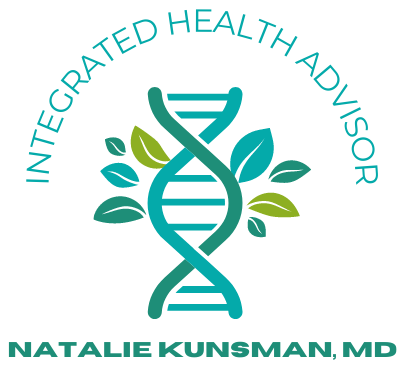Cholesterol is not the enemy.
- For decades, cholesterol has been vilified as the culprit behind heart disease and stroke. It’s been the subject of countless health warnings, dietary guidelines, and medication prescriptions. But recent research has challenged this long-held belief, suggesting that cholesterol may not be the enemy we once thought it was. In fact, some experts now argue that our obsession with lowering cholesterol may be misguided, and that we should focus on other factors that contribute to cardiovascular disease. So, is it time to rethink our approach to cholesterol? Let’s take a closer look.
- Cardiovascular disease (CVD) is a term used to describe a range of conditions that affect the heart and blood vessels. This includes conditions such as coronary artery disease, heart attack, stroke, and peripheral arterial disease. CVD is one of the leading causes of death worldwide, accounting for over 17 million deaths each year. Inflammation is a key factor in the development of CVD, and understanding the relationship between inflammation and CVD is critical to preventing and treating these conditions.
- Inflammation is a natural response of the immune system to injury or infection. It is a complex process that involves various immune cells and molecules working together to defend the body against foreign invaders and repair damaged tissue. Inflammation can be acute, meaning it is a short-term response to an injury or infection, or chronic, meaning it persists for a long time and can contribute to the development of chronic diseases like CVD.
“Cholesterol is not the enemy, inflammation is.” – Stephen Sinatra
- Acute inflammation is a protective response that helps to remove damaged tissue and fight off infections. It is characterized by redness, swelling, heat, pain, and loss of function. This response is initiated by the release of chemical signals from damaged tissue and immune cells, which attract immune cells to the site of injury or infection. The immune cells then release more chemicals, which cause the blood vessels to dilate and become more permeable, allowing immune cells and fluid to enter the affected tissue. Once the immune cells have completed their job of removing damaged tissue and fighting off infection, the inflammation subsides, and the tissue heals.
- Chronic inflammation, on the other hand, is a long-term response that can occur when the immune system is unable to eliminate the source of injury or infection. This can lead to a sustained immune response, which can damage healthy tissue and contribute to the development of chronic diseases like CVD. Chronic inflammation can be caused by a variety of factors, including infections, toxins, and lifestyle factors like poor diet and lack of exercise.
- There are many factors in the immune system that can contribute to the development of inflammation. One of the most important is the production of cytokines, which are small proteins that act as messengers between immune cells. Cytokines are involved in many different aspects of the immune response, including the activation and proliferation of immune cells, the production of antibodies, and the recruitment of immune cells to sites of injury or infection. However, when cytokine production becomes dysregulated, it can lead to chronic inflammation and tissue damage.
“Cholesterol is a vital substance that is needed for many functions in the body. We cannot live without it. The focus should be on reducing inflammation and improving overall heart health, rather than simply lowering cholesterol levels.” – Stephen Sinatra
- Another important factor in the immune system that contributes to inflammation is the activity of immune cells like macrophages and dendritic cells. These cells are responsible for identifying and removing foreign invaders like bacteria and viruses, as well as damaged or dying cells. However, they can also contribute to inflammation when they become overactivated or are unable to remove the source of injury or infection.
- In addition to immune cells and cytokines, other factors in the immune system can also contribute to inflammation. These include complement proteins, which are part of the innate immune system and help to identify and remove foreign invaders; Toll-like receptors, which are involved in detecting pathogens and initiating an immune response; and the inflammasome, a complex of proteins that activates the immune response in response to infection or injury.
- The link between inflammation and CVD is well-established, and a growing body of research suggests that chronic inflammation plays a key role in the development of these conditions. One of the ways in which inflammation contributes to CVD is by promoting the formation of atherosclerotic plaques in the arteries. Atherosclerosis is a condition in which plaques made up of cholesterol, fat, and other substances accumulate in the walls of the arteries, narrowing the blood vessels and reducing blood flow to the heart and other organs. This can lead to a variety of complications, including heart attack and strokes.
- Inflammation contributes to the development of atherosclerosis in several ways. First, inflammatory cytokines like interleukin-6 (IL-6) and tumor necrosis factor-alpha (TNF-alpha) can promote the formation of plaques by increasing the production of LDL cholesterol and reducing the uptake of cholesterol by immune cells in the arterial wall. Second, immune cells like macrophages and dendritic cells can accumulate in the plaques and contribute to their growth and instability. Third, the inflammasome can be activated in response to the cholesterol and other substances in the plaques, leading to further inflammation and tissue damage.
- In addition to promoting the formation of plaques, inflammation can also contribute to the rupture of plaques and the formation of blood clots, which can block blood flow to the heart and other organs. This can lead to heart attacks and strokes, which are major complications of atherosclerosis.
- There are several factors that can contribute to the development of chronic inflammation and the associated risk of CVD. These include infections, smoking, poor diet, lack of exercise, obesity, and stress. All of these factors can activate the immune system and lead to chronic inflammation, which can increase the risk of developing atherosclerosis and other CVD.
“Elevated cholesterol levels have been demonized as the cause of heart disease. The truth is that cholesterol levels are a poor predictor of cardiovascular risk, and the majority of heart attack victims have normal cholesterol levels.” – Mark Houston
- Preventing and treating chronic inflammation is therefore an important strategy for reducing the risk of CVD. This can be achieved through a variety of lifestyle interventions, including keeping sticky sugar low, maintaining a healthy diet, engaging in regular exercise, quitting smoking, and managing stress. In addition, there are natural remedies, energy work, supplements, and medications that can target inflammation and reduce the risk of CVD.
- In conclusion, cardiovascular disease is a complex set of conditions that affects the heart and blood vessels. Inflammation is a key factor in the development of these conditions, not cholesterol, and chronic inflammation in particular can promote the formation of atherosclerotic plaques, which can lead to heart attacks and strokes. Understanding the relationship between inflammation and CVD is critical to preventing and treating these conditions, and lifestyle interventions and medications that target inflammation can be effective strategies for reducing the risk of CVD.






Comments are closed.